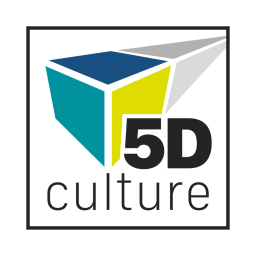Resource
Developing Enhanced and Enriched 3D Models of Cultural Heritage Assets
This document is a paper published in ISPRS Archives - volume XLVIII-2/W4-2024. This is the proceedings of 3D-ARCH, 10th International ISPRS / CIPA Workshop
5Dculture is a 24-month collaborative project co-funded by the European Union. It includes twelve partners from diverse sectors of cultural heritage, including archaeology, museums and fashion. It aims to enrich the offer of European 3D digital cultural heritage assets in the data space and fosters their reuse in important domains such as education, tourism and the wider cultural and creative sectors towards socially and economically sustainable outcomes. In particular, the project will deliver high-quality 3D content by identifying and engaging existing datasets from partners’ collections focusing on topics of fashion, archaeology and architecture, all of which occupy a central place in the vast cultural heritage of Europe. It will also develop several reuse scenarios, which will experiment with the aforementioned assets in their complexity (from high-quality to derivatives).
The Discovery Programme has a long research interest in 3D digital documentation and has participated in collaborative projects in the past, notably 3D-ICONS. However, opportunities and challenges in the reuse of 3D archaeological content exist, including the reuse of 3D content to enhance visitors experience at archaeological sites and the ability to exploit 3D surrogates for different sectors (tourism, education, gaming, the arts, conservation and heritage management).
This paper will present the research that has been undertaken in this context, through the development of an enhanced processing pipeline to improve the quality of 3D models of cultural heritage assets, resulting in their improved re-use. It will present the approaches to improving model geometry, generating and applying enhanced textures, creating rich and functional metadata and strategies for persistence and archiving.
A core component of our research has been the development of the processing pipeline to improve 3D model appearance through the application of parametric materials in the development of synthetic textures which artificially enhance the visualising of cultural heritage objects. Through the visual enhancements of 3D content improvements to the interpretation and aesthetic appearance of monuments and artefacts can be achieved, adding value to the original surveyed data. The paper will detail the processing pipeline, working from prime survey data in survey specific software, through 3D modelling techniques, and finally visualising and presentation approaches which enable increased accessibility and usability.
The paper will conclude with a discussion of deliverables, particularly in the context of value to conservation. The Discovery Programme works together with many of the state agencies in Ireland on heritage and conservation projects, and it is the delivery of enhanced but practical outputs that their archaeologists and architects require. These include the Office of Public Works, National Monuments Service & the Heritage Council.
The Discovery Programme has a long research interest in 3D digital documentation and has participated in collaborative projects in the past, notably 3D-ICONS. However, opportunities and challenges in the reuse of 3D archaeological content exist, including the reuse of 3D content to enhance visitors experience at archaeological sites and the ability to exploit 3D surrogates for different sectors (tourism, education, gaming, the arts, conservation and heritage management).
This paper will present the research that has been undertaken in this context, through the development of an enhanced processing pipeline to improve the quality of 3D models of cultural heritage assets, resulting in their improved re-use. It will present the approaches to improving model geometry, generating and applying enhanced textures, creating rich and functional metadata and strategies for persistence and archiving.
A core component of our research has been the development of the processing pipeline to improve 3D model appearance through the application of parametric materials in the development of synthetic textures which artificially enhance the visualising of cultural heritage objects. Through the visual enhancements of 3D content improvements to the interpretation and aesthetic appearance of monuments and artefacts can be achieved, adding value to the original surveyed data. The paper will detail the processing pipeline, working from prime survey data in survey specific software, through 3D modelling techniques, and finally visualising and presentation approaches which enable increased accessibility and usability.
The paper will conclude with a discussion of deliverables, particularly in the context of value to conservation. The Discovery Programme works together with many of the state agencies in Ireland on heritage and conservation projects, and it is the delivery of enhanced but practical outputs that their archaeologists and architects require. These include the Office of Public Works, National Monuments Service & the Heritage Council.
Drafted by Robshaw | Released 1 year ago | Last updated 4 months ago
